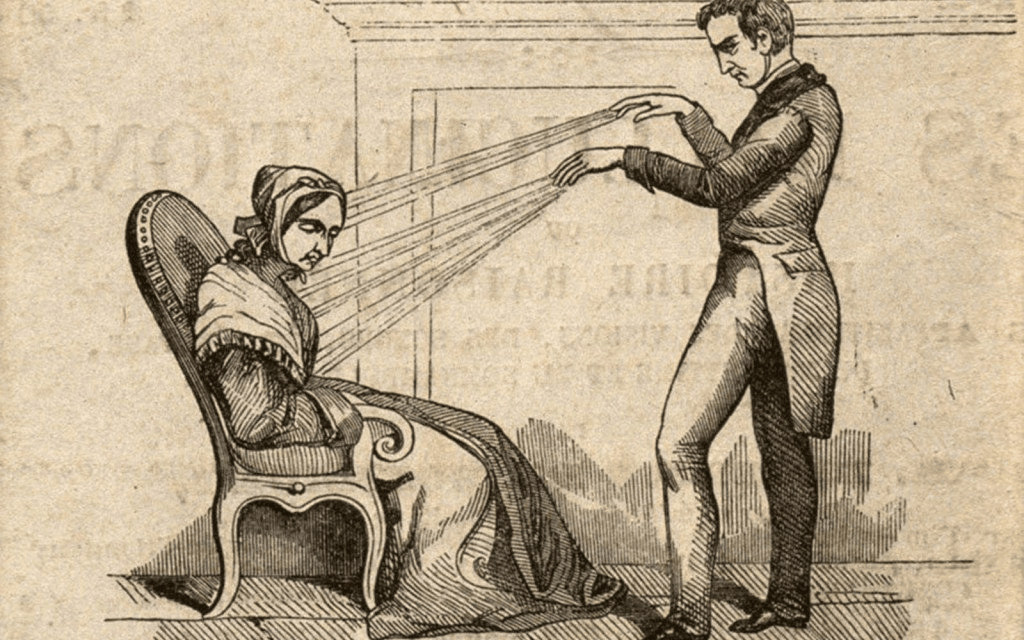Introduction
Imagine a world where pain and discomfort could be alleviated by something as simple as a magnet. This isn’t science fiction; it’s the fascinating realm of magnetic therapy. For centuries, magnets have intrigued humans with their invisible yet powerful forces. Today, magnetic therapy is gaining traction as a legitimate alternative treatment, promising to enhance well-being and promote healing. But how does it work, and what makes it so effective? Join us on a journey to uncover the magic of magnetic therapy and discover how it could transform your approach to health and wellness.
History of Magnetic Therapy

Magnetic therapy is not a new-age fad; its roots stretch back thousands of years. Ancient civilizations, including the Egyptians, Greeks, and Chinese, recognized the healing potential of magnets. Cleopatra, known for her beauty and mystique, reportedly wore a magnetic amulet on her forehead to maintain her youth. In ancient China, magnets were used to balance the body’s chi, or life force, a practice rooted in traditional Chinese medicine.
As centuries passed, the allure of magnetic therapy persisted. In the 16th century, the Swiss physician Paracelsus experimented with magnets to treat various ailments, from inflammation to mental disorders. By the 18th century, magnetic therapy had woven its way into mainstream medical practice, with the famous Austrian physician Franz Mesmer advocating for its use, giving rise to the term “mesmerism.”
Modern science began to take magnetic therapy seriously in the 20th century, leading to rigorous studies and clinical trials. The advent of advanced technology has further refined our understanding and application of magnetic fields in medicine, paving the way for its resurgence in the contemporary wellness landscape.
Science Behind Magnetic Therapy
So, what’s the science behind the magic? At its core, magnetic therapy involves placing magnets on or near the body to promote health benefits. The theory is that these magnets create a magnetic field that interacts with the body’s own electromagnetic field. This interaction is believed to influence the movement of ions and electrolytes in the body, enhancing blood flow, oxygenation, and nutrient delivery to tissues.
One key scientific theory suggests that magnetic fields can affect the behavior of charged particles in the blood, improving circulation and reducing inflammation. Enhanced blood flow can accelerate the healing process, making magnetic therapy particularly beneficial for injuries and chronic pain conditions.
Research supports these theories. Studies have shown that magnetic fields can stimulate cellular activity, promoting the regeneration of tissues. For instance, a study published in the *Journal of Rehabilitation Research and Development* found that pulsed electromagnetic field (PEMF) therapy significantly improved wound healing in diabetic patients.
Types of Magnetic Therapy
Magnetic therapy comes in various forms, each with its unique applications and benefits. Understanding the differences can help you choose the right approach for your needs.
Static Magnetic Therapy
Static magnetic therapy involves using magnets with a fixed magnetic field, typically embedded in bracelets, shoes, or mattress pads. These magnets are placed on specific areas of the body to provide targeted relief. Static magnets are commonly used for pain management, especially in conditions like arthritis and back pain.
Electromagnetic Therapy
Electromagnetic therapy uses electrically powered devices to generate magnetic fields. These devices can create both static and pulsed magnetic fields, offering more control over the intensity and duration of the treatment. Electromagnetic therapy is often used in clinical settings to treat a variety of conditions, from bone fractures to depression.
Pulsed Electromagnetic Field (PEMF) Therapy
PEMF therapy is a specialized form of electromagnetic therapy that delivers pulsed magnetic fields to the body. These pulses penetrate deep into tissues, promoting cellular repair and reducing inflammation. PEMF therapy is highly versatile and can be used for chronic pain, sports injuries, and even mental health conditions.
Benefits of Magnetic Therapy
The benefits of magnetic therapy are vast and varied, encompassing physical, emotional, and mental health improvements. Here are some of the key advantages:
Pain Relief and Management
One of the most well-documented benefits of magnetic therapy is its ability to relieve pain. Studies have shown that magnetic fields can reduce pain by blocking pain signals to the brain and reducing inflammation. This makes magnetic therapy a valuable tool for managing conditions like arthritis, fibromyalgia, and migraines.
Reduction of Inflammation
Inflammation is a common underlying factor in many chronic diseases. Magnetic therapy can help reduce inflammation by improving blood circulation and oxygen delivery to tissues, promoting faster healing and reducing swelling.
Improved Circulation and Healing
Enhanced blood flow is a significant benefit of magnetic therapy. Better circulation means more oxygen and nutrients are delivered to cells, accelerating the healing process. This is particularly beneficial for injuries, post-surgical recovery, and chronic wounds.
Stress Reduction and Mental Health Benefits
Magnetic therapy can also positively impact mental health. By improving circulation and reducing pain, it can alleviate stress and promote relaxation. Some studies suggest that PEMF therapy may help reduce symptoms of depression and anxiety, providing a natural alternative to medication.
Applications of Magnetic Therapy
The versatility of magnetic therapy makes it applicable to a wide range of health conditions and wellness goals. Here are some of the most common applications:
Common Conditions Treated with Magnetic Therapy
Magnetic therapy is used to treat various conditions, including arthritis, chronic pain, migraines, and neuropathy. It can also be beneficial for menstrual pain, carpal tunnel syndrome, and plantar fasciitis.
Sports Injuries and Recovery

Athletes and fitness enthusiasts can benefit from magnetic therapy to speed up recovery from injuries. It helps reduce inflammation, relieve pain, and promote faster healing of muscles and joints.
Use in Chronic Conditions
Chronic conditions like arthritis and fibromyalgia can significantly impact the quality of life. Magnetic therapy offers a non-invasive, drug-free option for managing pain and inflammation associated with these conditions.
Role in Overall Wellness and Preventative Care
Beyond treating specific conditions, magnetic therapy can be part of a holistic approach to overall wellness. Regular use can help maintain healthy circulation, reduce stress, and support the body’s natural healing processes.
Case Studies and Testimonials
Real-life success stories and expert opinions add credibility to the benefits of magnetic therapy. Here are a few examples:
– **John’s Story**: John, a marathon runner, suffered from chronic knee pain that hindered his training. After incorporating PEMF therapy into his routine, he noticed a significant reduction in pain and faster recovery times, allowing him to continue his passion for running.
– **Dr. Smith’s Endorsement**: Dr. Smith, a renowned orthopedic surgeon, recommends magnetic therapy to his patients for post-surgical recovery. He has observed improved healing outcomes and reduced reliance on pain medications.
These testimonials, along with clinical evidence, highlight the potential of magnetic therapy to transform lives.
Safety and Side Effects
While magnetic therapy is generally considered safe, it’s essential to be aware of potential risks and side effects. Most users experience no adverse effects, but some may have mild reactions such as dizziness, nausea, or skin irritation.
Potential Risks and Contraindications
Magnetic therapy is not suitable for everyone. People with pacemakers, defibrillators, or other implanted electronic devices should avoid magnetic therapy, as it may interfere with these devices. Pregnant women and individuals with certain medical conditions should consult a healthcare provider before starting magnetic therapy.
Guidelines for Safe Use
To ensure safe and effective use of magnetic therapy, follow these guidelines:
– Start with low-intensity magnets and gradually increase as needed.
– Use magnets specifically designed for therapeutic use.
– Follow the manufacturer’s instructions and consult with a healthcare professional if you have any concerns.
How to Get Started with Magnetic Therapy
Ready to explore the benefits of magnetic therapy? Here are some steps to get you started:
Choosing the Right Type of Magnetic Therapy
Determine your specific needs and choose the appropriate type of magnetic therapy. Static magnets may be sufficient for localized pain, while PEMF therapy could be better for more severe or widespread conditions.
Finding Reputable Products and Practitioners
Look for high-quality magnetic therapy products from reputable manufacturers. If seeking professional treatment, find practitioners with experience and positive reviews in magnetic therapy.
Tips for Integrating Magnetic Therapy into Daily Life
Incorporate magnetic therapy into your routine by using magnetic jewelry, mattress pads, or wearable devices. Consistency is key to achieving the best results, so make it a part of your daily wellness regimen.
Future of Magnetic Therapy
The future of magnetic therapy is bright, with ongoing research and technological advancements driving its evolution. Emerging technologies, such as advanced PEMF devices and smart magnetic wearables, promise even more effective and personalized treatments.
Emerging Technologies and Innovations
Innovations in magnetic therapy include portable PEMF devices, AI-driven magnetic treatment plans, and integration with other wellness technologies. These advancements aim to make magnetic therapy more accessible and tailored to individual needs.
Predictions for the Future of Magnetic Therapy
As research continues to validate the benefits of magnetic therapy, it is likely to become a mainstream treatment option. Its non-invasive nature and minimal side effects make it an attractive alternative to traditional therapies.
The Role of Ongoing Research and Development
Ongoing research is crucial to fully understand the mechanisms and potential of magnetic therapy. Continued investment in clinical trials and technological development will help refine and expand its applications.
Conclusion
Magnetic therapy holds incredible promise for enhancing health and well-being. From pain relief and improved circulation to mental health benefits and overall wellness, the potential applications are vast. As more people discover its benefits, magnetic therapy is poised to become a cornerstone of alternative medicine. Whether you’re seeking relief from chronic pain, recovering from an injury, or simply looking to enhance your overall health, magnetic therapy offers a natural, effective solution. Explore this fascinating therapy and unlock the magic of magnets for a healthier, more vibrant life.


